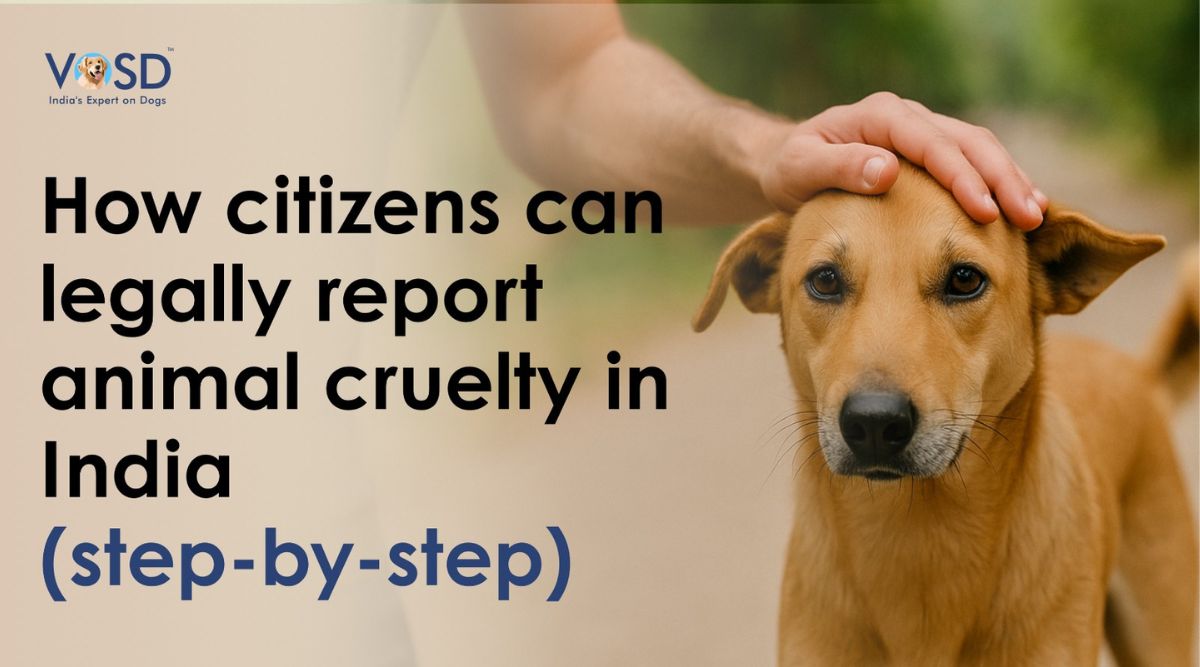Impact of stray dogs on public health: myths vs facts
India’s bond with street dogs is complex — shaped by care, fear, and misunderstanding. In cities like Bangalore, rapid urban growth has turned stray dogs into both a public health and community welfare topic.
India now has over 62 million stray dogs (2025), a number rising due to unplanned breeding and poor waste management. While often seen as a threat, most stray dogs coexist peacefully and even help maintain neighbourhood balance by reducing waste and alerting residents.
This article clears the confusion separating myths from facts, to show how communities can manage street dogs humanely while protecting public health.
Understanding the Link Between Stray Dogs and Public Health
When discussing stray dogs and public health, it’s vital to move beyond fear and focus on facts. Public health is about preventing disease and promoting well-being for both humans and animals. In India, this means understanding how dog populations, health, and environment connect with our own.
1. Direct Health Risks
- Dog bites: The most common concern. Bites can cause infections or, rarely, rabies if the dog isn’t vaccinated.
- Zoonotic diseases: Illnesses that spread between animals and humans, such as rabies, leptospirosis, and parasitic infections, are preventable through vaccination and sanitation.
2. Indirect Health and Environmental Risks
- Poor waste management: Overflowing garbage attracts dogs, leading to pack behaviour and uncontrolled breeding.
- Community fear and stress: Myths about stray dogs being “dangerous” often cause panic and result in harmful or ineffective control measures.
3. The One Health Approach
The One Health model recognises that human, animal, and environmental health are linked. Managing dog populations through sterilisation, vaccination, and better sanitation improves safety and well-being for all.
In short: The goal isn’t elimination — it’s coexistence through humane management and awareness.
Common Myths About Stray Dogs
The conversation around stray dogs and public health is often clouded by misinformation. Many of these misconceptions fuel fear, hostility, and even cruelty toward community dogs. Let’s address some of the most common myths about stray dogs and understand what science and behaviour studies actually say.
Myth 1: Stray dogs are always aggressive and dangerous
Many people assume that stray dogs are dangerous to humans, but aggression in dogs rarely comes without reason. According to stray dog behaviour studies, most street dogs are naturally cautious, not hostile.
Aggression usually occurs due to:
- Provocation or threat (someone throwing stones, chasing, or shouting).
- Defensive behaviour when protecting pups or territory.
- Fear caused by abuse or sudden movements.
In most cases, dogs bark to warn or defend — not to attack. Recognising and respecting their space reduces incidents significantly. Understanding stray dog behaviour facts helps communities coexist safely rather than react out of fear.
Myth 2: All stray dogs carry rabies
This is one of the most persistent misconceptions. While rabies in stray dogs is a legitimate concern, it’s not true that every street dog carries the virus.
India’s Animal Birth Control (ABC) program includes mass sterilisation and stray dog vaccination drives against rabies. In several cities, vaccinated dogs are marked with notches in their ears.
Preventing dog bite infections involves:
- Avoiding provocation.
- Immediate wound washing and seeking post-exposure prophylaxis (PEP) if bitten.
- Supporting community vaccination programs for dogs.
These steps drastically reduce rabies transmission and protect both humans and animals.
Myth 3: Feeding stray dogs increases their population
Feeding dogs doesn’t increase their numbers — breeding does. Dog populations grow when there’s uncontrolled reproduction, not because they’re fed. Responsible feeding actually helps by:
- Keeping dogs calmer and less likely to scavenge in waste areas.
- Making sterilisation and vaccination easier as dogs trust feeders.
- Supporting stray dog control measures led by local NGOs and municipal bodies.
Under stray dog feeding laws in India, feeding is protected as long as it’s done hygienically and responsibly, away from traffic and waste zones.
Myth 4: Stray dogs spread diseases easily to humans
Not if managed well. Studies show disease risk from stray dogs is low when they’re vaccinated and communities stay clean. The real issue is poor management, not the dogs themselves. With sterilisation, vaccination, and waste control, cities can ensure safe, healthy coexistence between people and stray dogs.
Facts: What Science and Data Actually Show
Scientific data paints a clearer and less alarming picture of stray dogs and public health. Research by the WHO, NCDC, and Indian veterinary institutions shows that most health issues arise from poor vaccination, sterilisation, and waste management, not from the dogs themselves.
Key Facts:
- Rabies in India: About 36% of global rabies deaths occur in India, mostly due to bites from unvaccinated dogs, not sterilised community dogs.
- Disease Control: Cities that follow Animal Birth Control (ABC) and mass vaccination programs report fewer bite cases and infections.
In short: Science shows that management, not fear, is the key to preventing disease and ensuring safe coexistence between people and stray dogs.
Scientific Consensus
Veterinary experts emphasise that stray dogs are not inherently carriers of disease. The spread of rabies or other infections happens only when basic health interventions, vaccination, sterilisation, and community education are missing.
In short, the science is clear: when managed responsibly, stray dogs pose minimal public health risk. The real solution lies in policy-driven, data-backed community animal management, not fear or elimination.
Real Public Health Risks Associated with Stray Dogs
Much of the discussion about stray dogs is shaped by myths and fear. In reality, the public health risks are real but manageable — if handled with science, compassion, and consistency. The goal isn’t to fear community dogs, but to manage them responsibly.
1. Rabies: The Most Serious but Preventable Risk
Rabies is the main dog bite–related disease in India, caused by bites or scratches from unvaccinated dogs. The virus spreads through infected saliva but is 100% preventable with the right steps:
- Mass vaccination of both pet and community dogs.
- Immediate wound care — wash the bite with soap and running water for at least 15 minutes.
- Get PEP (post-exposure prophylaxis) — timely rabies vaccine shots.
- Support Animal Birth Control (ABC) programs combining sterilisation and vaccination.
When these are followed, rabies transmission drops to near zero.
2. Parasitic and Bacterial Infections
Diseases like leptospirosis, mange, or intestinal worms can spread through infected dog waste or dirty water, but such cases are rare.
Simple steps like vaccinating dogs, keeping streets clean, and proper waste disposal effectively prevent these infections.
3. Dog Bites and Community Safety
Most dog bites happen when animals feel threatened or provoked, not because they’re aggressive.
To stay safe:
- Stay calm and avoid sudden movements around dogs.
- Teach children how to behave respectfully near community dogs.
- If bitten: Clean the wound, visit a doctor, and get PEP vaccination immediately.
- Report the bite to local health authorities for tracking and prevention.
Education and calm behaviour greatly reduce bite incidents in neighbourhoods.
4. Waste and Sanitation Issues
Open garbage attracts unsterilised dog packs and increases nuisance. The solution isn’t removal, it’s urban waste control and regular sterilisation drives, which reduce pack size and make dogs healthier and calmer.
Key Takeaways:
- Public health risks from stray dogs are preventable, not inevitable.
- The solution lies in vaccination, sterilisation, and clean waste management.
- Education and awareness reduce fear and conflict.
- Compassionate, science-based action builds safer, kinder communities for both people and dogs.
Positive Impacts of Stray Dogs on Communities
While much of the public conversation focuses on risks, it’s just as important to understand the positive role of community dogs in India’s cities and villages. These dogs aren’t just street dwellers, they are active contributors to the urban ecosystem.
1. Natural Waste Managers
Community dogs help keep streets cleaner by eating leftover food and organic waste. Their scavenging reduces garbage build-up and deters rats and pests, indirectly supporting better sanitation and hygiene in neighbourhoods.
2. Local Safety and Security
In many areas across India, community dogs act as natural guardians. They bark to alert residents of intruders or unusual activity, often serving as an early warning system — especially in quiet or low-lit areas.
3. Companionship and Mental Health
For many people, especially the elderly or those living alone, feeding or caring for community dogs brings comfort, connection, and purpose. Research shows that interacting with animals reduces stress and anxiety, strengthening emotional well-being and community bonds.
Key Takeaways:
- Community dogs play a positive role in urban life.
- They act as natural waste managers, keeping streets cleaner.
- Serve as neighbourhood protectors, alerting residents to danger.
- Offer companionship and emotional comfort, especially to the elderly.
- Their presence adds balance, safety, and compassion to every community.
Community Role: How Citizens Can Support Health and Safety
Stray dog management works best when citizens and communities get involved. By acting with compassion and awareness, residents can help create safer, cleaner, and more humane neighbourhoods.
How You Can Help:
- Support Sterilisation & Vaccination: Join or donate to local Animal Birth Control (ABC) and rabies vaccination drives.
- Report Sick or Injured Dogs: Alert NGOs or municipal vets for timely treatment and prevention.
- Promote Awareness: Educate neighbours and children about dog-bite prevention and post-bite care (PEP).
- Feed Responsibly: Feed dogs at clean, fixed spots — away from traffic and schools.
- Ensure Annual Vaccination: Encourage vaccination for all community and pet dogs.
When citizens participate, public health improves, dog bites decline, and communities become truly compassionate and safe.
Conclusion: A Balanced View on Stray Dogs and Public Health
Stray dogs aren’t the problem — poor management, lack of vaccination, and low awareness are. When communities act with science and compassion, fear and disease give way to safety and coexistence.
The solution is simple: sterilise, vaccinate, and educate.
By managing humanely, India can build cleaner, safer, and kinder cities for both people and dogs.
Support this mission, donate to VOSD and help provide lifelong care, vaccination, and rescue for India’s stray dogs.
Together, we can turn compassion into lasting change.
A Quick Q&A Section
Q1. Can stray dogs transmit diseases to humans?
Yes, but only in rare cases. Zoonotic diseases from stray dogs, such as rabies or leptospirosis, are preventable through vaccination and hygiene. The actual risk is very low in areas with active sterilisation and vaccination programs.
Q2. How dangerous are stray dogs really?
Most stray dogs are not dangerous to humans. They are defensive, not aggressive. Bites usually occur when dogs are provoked or frightened. Educating communities about dog behaviour drastically reduces conflicts.
Q3. Do stray dogs cause rabies in India?
Rabies cases in India come mainly from unvaccinated dogs. Cities like Bangalore that run mass rabies vaccination drives have reported sharp declines in infections.
Q4. Is feeding stray dogs illegal?
No. Feeding stray dogs is legal in India, as long as it’s done responsibly and hygienically. The Delhi High Court and several municipal bodies recognise feeding as part of community responsibility.
Q5. What are the health risks of stray dogs?
The real public health risks from stray dogs come from poor waste management and lack of vaccination, not the dogs themselves. With sterilisation, vaccination, and community care, these risks are fully manageable.
Simple actions, clear facts, and empathy can turn myths into awareness, making Indian cities safer and kinder for everyone.








